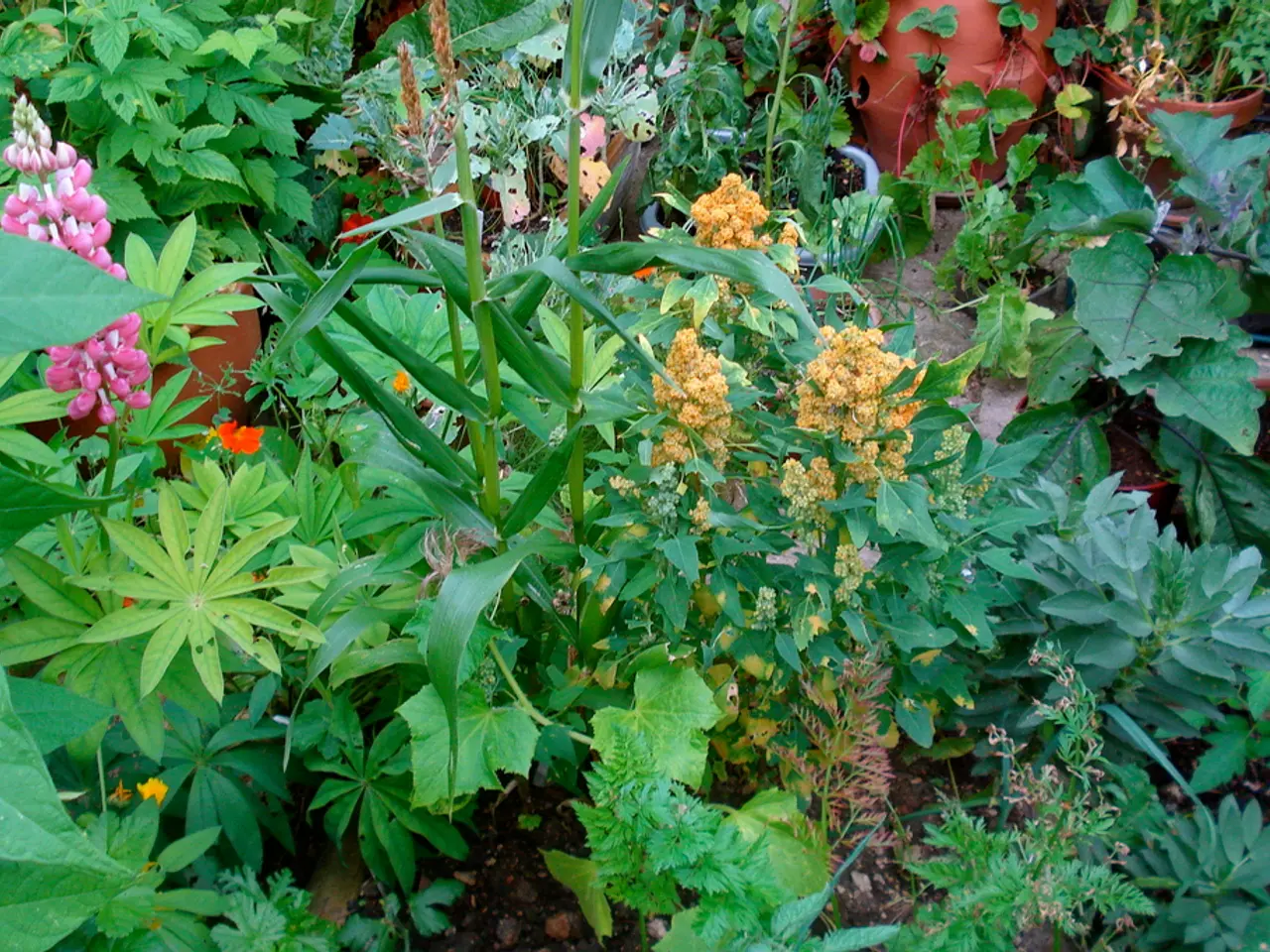Stormwater Management through Eco-Friendly Rain Gardens
In the heart of bustling urban landscapes, a quiet revolution is taking root. Rain gardens, eco-friendly landscapes designed to manage stormwater runoff, are making a significant impact on urban sustainability. These innovative green spaces offer a multitude of environmental, social, and infrastructural benefits, contributing to a resilient, ecologically balanced, and sustainable cityscape.
One of the primary roles of rain gardens is stormwater management and flood mitigation. By slowing the flow of rainwater runoff from impervious surfaces such as roofs and pavements, they allow water to infiltrate into the ground rather than overwhelming urban drainage systems. This reduces urban flooding risks and lessens pressure on sewer infrastructure, protecting both infrastructure and residents from potential water-related disasters.
Erosion control is another key benefit of rain gardens. By capturing runoff and facilitating infiltration, they prevent soil erosion and sediment displacement, safeguarding urban landscapes and built infrastructure from damage caused by uncontrolled water flow.
Rain gardens also serve as natural biofilters, trapping pollutants, sediments, and chemicals carried by stormwater before they reach streams, rivers, or groundwater. This improves the health of urban waterways and reduces contamination, supporting healthier waterways and a cleaner environment.
The biodiversity of urban areas is enhanced by rain gardens, which are planted with native flowers, grasses, and shrubs. These provide important habitats and food sources for pollinators such as bees and butterflies, as well as birds and beneficial insects. This boost in urban ecological connectivity and biodiversity is a welcome addition to the cityscape.
Climate change mitigation and resilience are also addressed by rain gardens. Beyond managing water, they contribute to restoring natural hydrological cycles, which supports vegetation growth and carbon sequestration. Their integration within broader "sponge watershed" systems helps cities adapt to climate change by reducing flood peaks and stabilizing soils, especially in vulnerable areas.
Rain gardens also offer aesthetic and property value benefits. Apart from their ecological functions, they enhance the visual appeal and landscape diversity of urban spaces, potentially increasing property values by up to 15%. This functional landscaping blends beauty with sustainability for urban dwellers.
In summary, rain gardens are a multifunctional green infrastructure solution that improves urban sustainability by managing stormwater naturally, protecting ecosystems, enhancing biodiversity, mitigating climate impacts, and improving urban living environments. Their adoption is a key strategy for resilient, ecologically balanced, and sustainable cities.
These eco-friendly oases are more than just attractive additions to the urban landscape. They are educational tools promoting awareness of sustainable landscaping and the importance of native plants. They also provide shade and release moisture through evapotranspiration, helping to cool urban microclimates and mitigate heat island effects.
Soil health is maintained in rain gardens during their design and upkeep, with mulch added for soil conservation. Using native plants enhances adaptability, reduces maintenance, improves soil health, and supports biodiversity. Plants and soil in rain gardens act as natural filters, trapping pollutants and improving water quality.
Incorporating native plants in rain gardens not only supports ecological health but also fosters a sustainable and resilient environment. Native plants offer diverse colors, textures, and seasonal interest, contributing to the visual beauty of the garden while promoting a sense of place.
Rain gardens are designed by selecting a location with proper drainage, determining size, preparing soil, selecting plants, adding mulch, installing inlets and outlets, and maintaining the garden through watering, weed management, and seasonal care. With their natural processes such as absorption, infiltration, and evaporation, they filter rainwater effectively, contributing to a cleaner and greener city.
In a world where urban environments are increasingly dominated by concrete and asphalt, rain gardens offer a breath of fresh air. They are more than just pretty gardens—they are a testament to the power of nature in urban spaces, improving our cities in ways that extend far beyond their physical beauty.
- Integrating native plants in rain gardens not only contributes to visual beauty but also promotes environmental science, as they serve as educational tools for sustainable landscaping and the importance of native plants.
- The environmental-science benefits of home-and-garden practices, such as rain gardens, can reach beyond urban landscapes, as they help improve the health of waterways by trapping pollutants, sediments, and chemicals carried by stormwater.
- As climate-change challenges urban areas, the implementation of environmental-science solutions, like rain gardens, can offer long-term benefits, such as reducing flood peaks, stabilizing soils, and restoring natural hydrological cycles for greater climate resilience.





